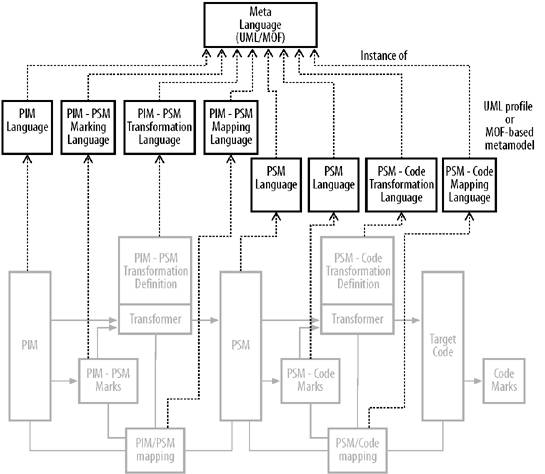Section A.6. Languages to Formally Describe MDA
A.6. Languages to Formally Describe MDAThe transformations describe in the preceding section can't work without strict inputs. Each model must respect a structure that constrains its expressiveness formally; automated transformations can't understand just any model. Each model requires a specialized model, as shown in Figure A-5. UML profiles provide one vehicle to constrain each model; alternative MOF-based metamodels provide another. Explicit UML profiles enforce constraints so that only models considered valid by the transformers can be processed. Considering the leverage of expression between the PIM and each PSM, and again between each PSM and its derivative Figure A-5. Each model and transformation definition conforms to a language code models, slightly invalid source models would produce rubbish. UML profiles provide the discipline needed to keep such a complex system running. MDA systems need not have such a formal definition as the one we described. Certainly architects who extend the transformations with custom scripting will not back it with a formal transformation language. The languages act much as DTDs or schemas do for an XML document: languages assure that the consumers will understand the model. |
EAN: 2147483647
Pages: 132